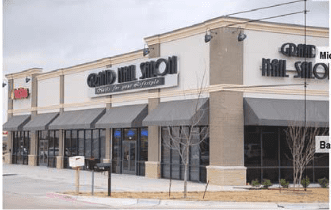
Commission continues to look over proposed development
The Plant City City Commission took the opportunity to analyze a revised version of the Gateway District development during a workshop, on April 11.
The Plant City Planning and Zoning Department once again offered another proposal for constructing new buildings along James L. Redman Parkway.
It would be used for civic, commercial, and workplace purposes as well as single and multi-family houses.
Civic uses include public schools, colleges, public hospitals, community centers, libraries, museums, fire and police stations, and courthouses.
It would also be comprised of two or more climate-controlled, mini-storage units.
What was originally suggested as being the Mixed-Use Gateway will now be referred to as just the Gateway District as the former description may be used in referring to other potential developments in Plant City. However, each structure is subject to having at least two purposes, but residences cannot make up more than 80%.
A buffer of at least 500 feet must be between Redman Parkway and the residential developments in lieu of the 300-foot buffer that was initially suggested. Enhanced landscaping along Redman Parkway would be required to have one tree every 25 feet. Trees would be required to be in two rows and there must be a continuous row of hedges.
The proposed code language for the Gateway states that, “These supplemental regulations are intended to regulate those developments within the Gateway District to create a “sense of place” through architecturally appealing design, require the interconnection of uses, protect, and enhance the pedestrian environment and allow for a mix of land uses which will strengthen opportunities for economic vitality and diverse housing opportunities within the Gateway District.”
To meet code the development:
• Has a minimum lot area of 75 feet wide and 7,500 square feet
• Establishes setback standards for multi-use buildings, basing setbacks on the use residing on the first floor
• Has a building next to, across from, or diagonal to another building that doesn’t share the same color, model or architectural features
• Building elevations for all types of development are required
The maximum height of a building would be four stories or 60 feet and allows residences to be located above nonresidential establishments. Nonresidential buildings would have tri-partite type architecture so that each has a distinct base, middle and top. Buildings under 25,000 square feet, must provide vertical and horizontal articulations in the form of indentions and components that relate to human scale.
To steer away from having a mundane appearance, buildings will be required to have more than one color. They cannot be predominantly black or neon or florescent colors.
Structures will also have to have diverse architecture from windows, doors, awnings, canopies, offsets, column reveals, and projecting ribs at least every 30 feet.
Only monument signs identifying an establishment can be erected and cannot exceed 10 feet.
Buildings located at the main entrance of a development or major intersection are required to have landmark features such as towers, cupolas, porta cocheres, gabled roofs or artwork. Flat roofs have to have a cornice treatment or a parapet that is 2 feet high. Visible roofs should be light colored or green.
Street walls would be permitted as a means to screen parking spaces or to frame public spaces like courtyards or outdoor dining.
The walls are required to be made of brick masonry, wrought iron, stone or other decorative materials that complement the building, but no chain links, wire, or PVC fences. They would be the only type of screening along roadways and could span anywhere from 3 feet to 5 feet tall.
The development should have minimal entryways onto and off Redman Parkway and has an interconnection for vehicular and pedestrian linkages.
Parking would have to be limited to the side or rear of the proposed structures, and 15% of parking will be reduced to better accommodate bicyclists and pedestrians.
Prohibited building elements, details, and materials include:
• Modular buildings
• Pre-engineered metal buildings with metal building skin
• Unfinished vertical pre-cast concrete surfaces
• Open walled, shed roof storage facilities
• Reflective, opaque and/or bronze tinted glass
• Chain link, plastic panel, barbed wire, razor wire or wire mesh fences, but vinyl-coated chain links would be acceptable
• Applied mansard roofs
• Glossy finished awnings
• Wall or window mounted mechanical equipment visible from the main street
A final vote on the project could occur as early as October. It will be reviewed by the Planning Board and the board will give its recommendation to the commission – which will ultimately make the final decision.
